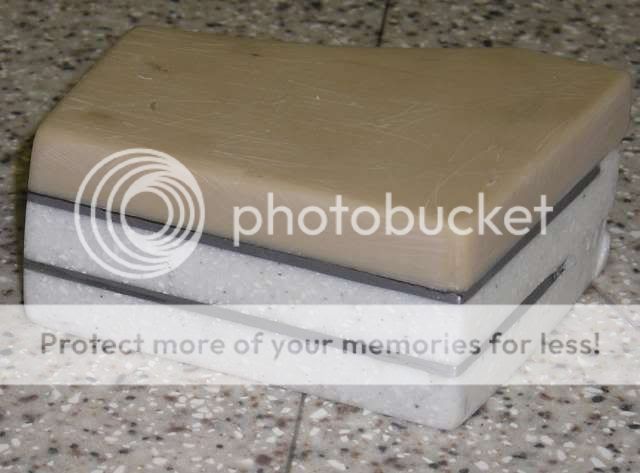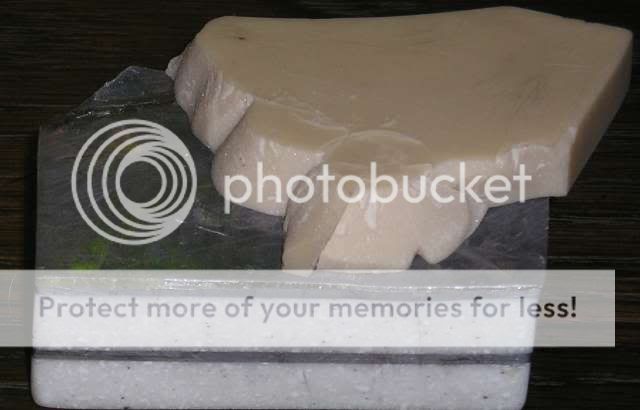Well, construction has started on my turntable. Thus far it’s been cutting out pieces and mocking up. The platter is being constructed out of alternating Corion and lead sheeting..four .5” thick pieces of Corion, with three .08” thick pieces of lead sheeting between.
The lead has been flattened, and the Corion cut. Now I need to figure out the best method of laminating. I am thinking epoxy while it cures under pressure….any suggestions ?
Thanx,
Casey
P.S. My apologies if this was covered before…it seems to me it was, but I haven’t been able to find it again.
The lead has been flattened, and the Corion cut. Now I need to figure out the best method of laminating. I am thinking epoxy while it cures under pressure….any suggestions ?
Thanx,
Casey
P.S. My apologies if this was covered before…it seems to me it was, but I haven’t been able to find it again.
Hi,
AFAIK Corian is a mineral matrix with an acrylic base so I'd
suggest possibly an acrylic solvent cement. But there seems
to be quite a few different types of acrylic based adhesives,
perhaps some are not directly intended for bonding acrylic.
🙂 /sreten.
AFAIK Corian is a mineral matrix with an acrylic base so I'd
suggest possibly an acrylic solvent cement. But there seems
to be quite a few different types of acrylic based adhesives,
perhaps some are not directly intended for bonding acrylic.
🙂 /sreten.
In the good old days we used to bond acrylic with chloroform....... no one ever left work depressed!
In the UK you can get Tensol (No12 I think) or dissolve acrylic swarf in Dichloromethane - (USE IN A WELL VENTILATED SPACE, DO NOT SMOKE, NO NAKED FLAME) to make a syrup - too thin and it goes off too quickly for you to position the parts - but it always goes off quickly, so work fast, so use some scraps to practice on.
In the UK you can get Tensol (No12 I think) or dissolve acrylic swarf in Dichloromethane - (USE IN A WELL VENTILATED SPACE, DO NOT SMOKE, NO NAKED FLAME) to make a syrup - too thin and it goes off too quickly for you to position the parts - but it always goes off quickly, so work fast, so use some scraps to practice on.
Since I need to be concerned with how well it sticks to lead as well as the Corian , first attempt is going to be slow set epoxy.
I just set up a test with some scrap pieces of lead and Corian...I'll have a good idea tomorrow if this will work or not.
Casey
I just set up a test with some scrap pieces of lead and Corian...I'll have a good idea tomorrow if this will work or not.
Casey
Epoxy may work. If not, think about a high-bonding sheet adhesive, acrylic-based, on the soft side. A search through 3M's product line may be useful. Besides adding a bit of damping, a soft adhesive will compensate for the mismatch of coefficient of thermal expansion between Corian and lead.
Hello Sy,
Hadn't thought of that. I epoxied up a test block a few hours ago, and after it set it was already tough enough to remove the clamps and grind/file/sand the edges ...

...tomorrow I'll whack the snot out of it to get an idea of its strength. If it doesn't pass muster, I'll look into some high-bonding sheet adhesive. I agree the dampning would be a plus, that is one of the reasons I hope epoxy will work..the "24 hour" variety never seems to get truly "hard" and stays somewhat flexible.
Casey
Epoxy may work. If not, think about a high-bonding sheet adhesive, acrylic-based, on the soft side
Hadn't thought of that. I epoxied up a test block a few hours ago, and after it set it was already tough enough to remove the clamps and grind/file/sand the edges ...

...tomorrow I'll whack the snot out of it to get an idea of its strength. If it doesn't pass muster, I'll look into some high-bonding sheet adhesive. I agree the dampning would be a plus, that is one of the reasons I hope epoxy will work..the "24 hour" variety never seems to get truly "hard" and stays somewhat flexible.
Casey
Make sure you thermally cycle it a bit; that's the downfall of a lot of epoxies when bonding plastic to metal. The high mineral loading of the Corian is at least a partial anodyne.
Make sure you thermally cycle it a bit
How deep and how often 😀
Would alternating it between indoor/outdoor temps (70deg/40deg) be good enough, or do you think I need to get a little more severe, say an hour in the deep freeze followed by a thaw.
I'd run it back and forth between as cold as you think it will ever get and how warm. Maybe 50 to 90? Let it equilibrate at each temperature. If it survives 5 or 6 cycles, you're probably golden.
I've used some 3M double sided tape that was amazingly strong. It may be a little too spongy for what you are doing. But we used it on an oven that was a prototype prepared for a show. We used double stick to hold the 16 ga stainless steel panels to the frame. When it came back from the show, and we tried to take the panels off.... well lets just say that the panels were not exactly usable when they finally came off. Knife, hammer, cursing...  you get the picture.
you get the picture.
DaveM
 you get the picture.
you get the picture.DaveM
Houston..we have lamination !!
After thermally shocking my test block by cycling it between my icebox and a heater register in 45min intervals through the course of the day (which it survived), I put it on the anvil section of my vise and pummeled on it with a 16oz carpenters hammer. After a few healthy blows, i came down on it with the edge of the hammer face...

...it shattered the top layer , and cracked the second layer, but othewise stayed intact.
The seperation point was between the epoxy and lead, but I can strengthen it further by roughing up the lead surfaces to give it some "tooth".
All in all, I would say that 24 hour epoxy from your friendly Ace hardware store will be my glue of choice...In the words I've Sy...I'm golden
Casey
After thermally shocking my test block by cycling it between my icebox and a heater register in 45min intervals through the course of the day (which it survived), I put it on the anvil section of my vise and pummeled on it with a 16oz carpenters hammer. After a few healthy blows, i came down on it with the edge of the hammer face...

An externally hosted image should be here but it was not working when we last tested it.
...it shattered the top layer , and cracked the second layer, but othewise stayed intact.
The seperation point was between the epoxy and lead, but I can strengthen it further by roughing up the lead surfaces to give it some "tooth".
All in all, I would say that 24 hour epoxy from your friendly Ace hardware store will be my glue of choice...In the words I've Sy...I'm golden

Casey
- Status
- Not open for further replies.
- Home
- Source & Line
- Analogue Source
- Platter Laminating...Best Adhesive?